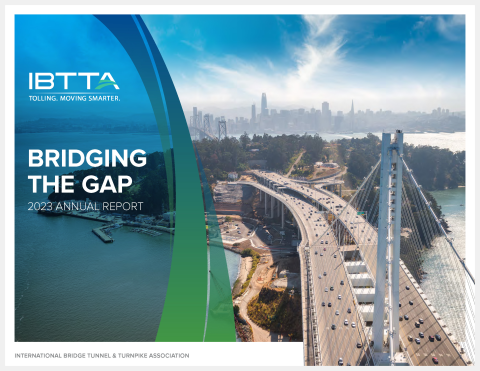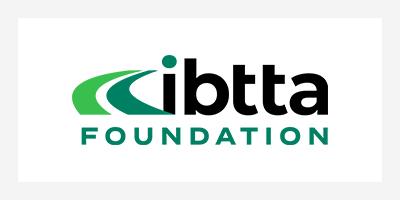| Title Sort descending | Description |
|---|---|
| ATMS | Advanced Traffic Management System |
| ATRACIT | Advanced Traffic Control In Historical Town (Czech project) |
| Authority | In the US, a publicly-owned entity created to finance, develop and operate public infrastructure such as toll bridges, tunnels, and roads. |
| Automatic/Automated Vehicle Identification | AVI. Automated Vehicle Identification. A system which transmits signals from an on-board tag or transponder to roadside receivers for uses such as electronic fee collection and stolen vehicle recovery. |
| AUTOPASS | autoPASS is an electronic toll collection system used in Norway. It allows collecting road tolls automatically using electronic radio transmitters and receivers operating at 5.8 GHz. |
| AVC | Automatic/Automated Vehicle Classification. Determines the type of vehicle (car, truck, bus, etc.) and the vehicle characteristics (weight, number of axles, tires, etc.) as required for toll classification. |
| AVC | Automatic/Automated Vehicle Classification - Determines the type of vehicle (car, truck, bus, etc.) and the vehicle characteristics (weight, number of axles, tires, etc.) as required for toll classification. |
| AVI | Automated Vehicle Identification. A system which transmits signals from an on-board tag or transponder to roadside receivers for uses such as electronic fee collection and stolen vehicle recovery. |
| Back Office | Database system that enables registration and maintenance of customer accounts; facilitates funds transfer between participating Authorities. See also Customer Service Center (CSC). |
| Bandwidth | The amount of data that can be passed along a communications channel in a given period of time. |
| Barrier Plaza | A toll plaza on a mainline roadway. Typically referring to a toll plaza in a Barrier System but could also be the terminus of an Entry-Exit Ticket System. Barrier plazas require customers to come to a stop or a slow roll-through speed to pay toll or parking charges. Barrier plazas may be used on mainline toll roads, bridges, tunnels, or larger parking facilities such as airports, convention centers, or major attractions and sports venues. |
| Barrier System | An arrangement of mainline and ramp toll plazas and/or toll zones with discrete toll schedules. Mainline barrier plazas are typically spaced ten to twenty miles apart. Barrier systems can be open (with some free movements allowed) or closed (with no free movements allowed). |
| Beacon | Also known as Road-Side Unit and RSU. The roadside infrastructure component of an ETC system; a receiver or transceiver that identifies the On-Board Unit in the vehicle, and identifies the account, permitting an electronic toll transaction to occur. |
| CARDME | Concerted Action for Research and Demand Management in Europe . A European Commission project on ETC interoperability that involves national administrations. |
| Cashless Tolling | "Cashless" usually implies that there is no opportunity to stop and pay tolls at the toll point, whether with cash, cards, tickets or a phone app. |
| CCTV | Closed Circuit Television |
| CDMA | Code Division Multiple Access, a cellular technology. See also: Global System for Mobile Communications (GSM). |
| CEN | Comité Européen de Normalisation: is the European Committee for Standardization. |
| CEN 278 | CEN TC278 is the Technical Committee #278 responsible for Road Transport and Traffic Telematics, whose Working Group 9 has agreed upon the norms for ETC based upon DSRC 5.8 GHz. |
| CENELEC | Comité Européen de Normalisation Electrotecnique: is the European Committee for Electrotechnical Standardization |
| Certificate Authority | A Certificate Authority (CA) is an organization that issues and manages security credentials and Keys for message encryption and decryption. As part of Public Key Infrastructure (PKI), the CA provides certificates (Keys) to Issuers. The Keys are used to encrypt, sign and secure Electronic Payment Services (EPS) transactions. |
| CESARE | Common EFC System for an ASECAP Road tolling European system. CESARE is a project set up by ASECAP and partially funded by the European Union with the intention of specifying, designing, developing, promoting and implementing a common interoperable Electronic Fee Collection System (EFC) on European toll roads. |
| Classify | To determine the category of the vehicle to be tolled based upon its specific structure, weight, axles, tires, etc. |
| Clearinghouse (Financial) | A Clearinghouse Network routes transactions for reconciliation. The term applies to all types of financial transactions, not just toll transactions. Examples of Clearinghouses (or Clearinghouse Networks) include the Federal Reserve Automated Clearinghouse Network (ACH), VISA, MasterCard, American Express, Pulse & Cirrus. It is important to note the distinction between a Clearinghouse and a Fiduciary (defined below): A Fiduciary converts transactions into Funds, a Clearinghouse routes transactions to Fiduciaries. |
| Clearinghouse (Toll Authorities) | Provides all requisite financial services to transfer monies between participating Authorities; provides accurate and timely downloads of customer accounts, violations and all other information necessary for an interoperable system. |
| Closed Barrier System | An arrangement of mainline and ramp toll plazas and/or toll zones with discrete toll schedules, located such that every possible trip incurs at least one toll. A closed barrier system may use ORT Toll Zones, or toll plazas. |
| Closed Entry-Exit System | A toll concept employing toll points (either plazas or toll zones) at every facility entrance and exit to detect trip length for toll rate setting and to not allow any free movements. |
| Closed System | An arrangement of toll points on a facility to ensure that all vehicles pay some toll amount for use of the facility. |
| Closed Toll Section | Section of a toll road where an entry ticket is needed and where the amount of the toll to be paid is subject to the distance traveled. |
| Concession | Toll concessions are contracts to develop and/or operate toll facilities on behalf of a facility owner - normally a public sector entity. Toll concession contracts are long-term agreements, often for 30 years or more. Service Area concessions are contracts to develop and/or operate driver service areas and gas stations. |
| Concessionaire Company | Mainly in Europe: A company which is awarded, by a concessioning Administration, the operation of a toll facility. Usually the contract includes the design, construction, financing and operation of the facility. |
| Congestion Pricing | Also “Variable Pricing.” Toll facility pricing that is set based on traffic demand, with higher toll rates at high-traffic periods and lower toll rates at low-traffic periods. Rates may vary by time of day, day of the week, or may vary dynamically based on current traffic conditions. Value Pricing is designed to achieve performance objectives to reduce traffic congestion and delay by shifting travel to less congested periods or different modes, encouraging high vehicle occupancy, or reducing the number of vehicular trips taken. |
| Connected Vehicle | Connected Vehicle Program - The U.S. DOT Research and Innovative Technology Administration (RITA) \ ITS Joint Program Joint Program Office (ITS JPO) is the major sponsor of the Connected Vehicle program. Connected Vehicle focuses on localized Vehicle-to-Vehicle, Vehicle-to-Infrastructure and Vehicle-to-Device Systems (V2X) to support safety, mobility and environmental applications using vehicle Dedicated Short Range Communications (DSRC)\Wireless Access for Vehicular Environments (WAVE). This program has support from most of the automakers and a number of state departments of transportation. |
| Contract Issuer | Organization that issues contracts and which is responsible for payment to the Transport Service Provider (TSP) on behalf of the customers. |
| Contributo (Contribution) | Tribute levied on certain private subjects, justified by the fact that these subjects benefit from the results of a given public activity. It shares the characteristics of both tax (tassa)--being the consideration for a service, and tax (imposta)--to be paid even if the subjects have not requested the service. |
| Conventional Lane | A toll lane wherein a Toll Service Attendant is present to accept cash, token or ticket as toll payment from a customer. |
Pagination
Description of Toll Facilities
That which is being tolled.
| Toll Facility Type | Description | Examples |
|---|---|---|
| Highway | Also described as a toll motorway, toll expressway, or toll freeway. A limited-access facility where tolls are collected. | Many examples listed on TollMiner, such as Pennsylvania Turnpike, Austria A2 Motorway, |
| Bridge | A bridge is vehicular roadway infrastructure which provides passage over a geographic barrier in exchange for a toll charged for each vehicle using the bridge. | Golden Gate Bridge, George Washington Bridge. |
| Tunnel | For purposes of this glossary, a tunnel with a toll charged for each use. Examples are the tunnels under the rivers into Manhattan. Other tunnels such as those on the Pennsylvania Turnpike are not tolled separately but as part of the overall turnpike toll, and so are not listed as separate toll facilities. | Lincoln Tunnel, BrooklynBattery Tunnel, WSDOT SR 99 Tunnel (Seattle) |
| Bridge/Tunnel | A toll facility with both major bridges and tunnels in one facility. | The Chesapeake Bay BridgeTunnel. |
| Managed Lane(s) | Designated expressway lanes operating in parallel with other general- purpose travel lanes on a given route. Traffic in the managed lanes is controlled by access rights, occupancy, and/or variable price. Priced managed lanes may include highoccupancy discounts or exemptions.
Express Toll Lanes (ETLs) are managed lanes with no provisions for HOV discounts or exemptions. | MDTA I-95 |
| Managed Lane(s) | Designated expressway lanes operating in parallel with other general- purpose travel lanes on a given route. Traffic in the managed lanes is controlled by access rights, occupancy, and/or variable price. Priced managed lanes may include highoccupancy discounts or exemptions.
High-Occupancy Toll (HOT) Lanes are managed lanes with provisions for HOV discounts or exemptions. | SRTA (GA) Managed Lanes, I95/I-395/I-495 Express Lanes |
| Cordon Tolls | Cordon tolls are fees paid by motorists to drive into a designated area defined by a line that encloses to tolling area, often a city center. Cordon tolls are charged when a vehicle crosses the line of the designated tolling area. Some cordon tolls are only in effect during designated hours of the days or days of the week. | Singapore, , Oslo, pending in NY and in design in other areas such as Los Angeles. |
| Area Tolls | Area tolls are fees paid by motorists that are present within a designated area, often a city center. Area tolls are based on detection of vehicle presence within the designated charging zone and may be charged for vehicles that begin and end their trip within the charging zone. | London |
Road User Charging (RUC) Program (also referred to as MileageBased User Fees (MBUF) and Vehicle-Miles-Traveled (VMT) Fees | Pricing the use of roadways by distance travelled on any facility. This may be applied on specific roadways or on all roads in a jurisdiction. Governments are exploring the utility of this transportation revenue options as a replacement for motor fuel taxes as a sustainable revenue source. | New Zealand, pilot in OR, UT, CA and other US |
Description of Plaza Lane Types
Lane types within a toll plaza environment with some conventional toll plaza lanes.
| Lane Type | Description |
|---|---|
| ACM Lane or Unattended Lane (1) | A toll lane with an Automatic Coin Machine (ACM) in place of a toll attendant. Generally signed for vehicles to come to a stop but in practice often allow slow roll-through. May include ETC and license plate cameras. |
| Conventional Lane = Manual Lane = Attended Lane = Full-Service Lane (1) | A toll lane wherein a Toll Service Attendant is present to accept cash, card, token or ticket as toll payment from a customer. |
| Mixed Use Lane (1) | A toll plaza lane accepting multiple options for toll payment. Typically modified to include ETC. Generally signed for vehicles to come to a stop but in practice allow slow roll-through for electronic transactions. |
| Dedicated ETC Lane = ETC Lane (1) | A toll plaza lane used to only accept ETC for toll payment and typically allowing roll-through speeds or speeds less than the roadway speed limit. More often with license-plate cameras for toll enforcement, but some toll operators use gates for toll enforcement instead of cameras. |
| Convertible Lane (1) | A toll plaza lane which can operate in more than one mode, for example in a conventional mode with a toll attendant, in an automatic mode with a machine to accept payment, or in a dedicated ETC Lane mode. |
| Non-Stop Lane (2) | A lane designed for ETC customers in a conventional toll plaza, with conventional toll lane widening or changes to safely allow for higher-speed ETC-Only travel. Typically with license plate tolls for enforcement. |
| ORT Lanes (3) | Open-Road Tolling, also called All-Electronic Toll lanes, equivalent to Multi-Lane Free Flow (MLFF) roadways, which allow drivers to pass by without making lane changes or slowing down. Vehicles in these lanes are driving through a highway section with no restrictions or horizontal or vertical clearances or travel speed. |
| Notes | Note 1: Constructed with limited width, designed to bring vehicle to a stop, with toll plaza islands between the lanes. Note 2: Construction modified to provide improved passage for non-stop movement, typically with some toll lane widening. Note 3: Constructed to be physically separate from all other toll plaza lane types. |
Description of Toll Concepts
The arrangement of toll points on a facility to collect tolls. A toll point is a place where tolls are collected, either with a toll plaza, or at an Open Road Toll (ORT) toll zone without a cash plaza.
| Toll Point Type | Description | Examples | ||
|---|---|---|---|---|
| Closed System An arrangement of toll points on a facility to ensure that all vehicles pay some toll amount for use of the facility. | Closed TripBased Toll System | Entry-Exit (“Ticket”) System | An arrangement of toll plazas at every facility entrance and exit. This arrangement enables the measurement of trip length by recording facility entry on paper tickets (or an electronic toll record) and collecting paper tickets or electronically recording the exit location. Entry-exit systems can work with ETC as well as with tickets. | PA Turnpike Mainline, Ohio Turnpike, Indiana Toll Road, NJ Turnpike. Mass Pike (I-90) was originally a ticket system toll road. |
| AET EntryExit System | An arrangement of toll zones without toll plazas at every facility entrance and exit, to measure trip length as recorded in the electronic toll system. | Toronto 407-ETR, portions of the New York State Thruway | ||
| AET Mainline System | An arrangement of toll zones without toll plazas between interchanges. The toll system collects the toll zone data to determine a trip entry and exit – and thus trip length. | Mass Pike (I-90), Virginia Express lanes (I-95, I-395, I-495) | ||
| Closed Barrier Toll System | AET Mainline System | An arrangement of toll zones without toll plazas between interchanges, with discrete toll rates at each toll zone. | Illinois Route 390, MDTA MD-200. | |
| Closed Barrier Plaza System | An arrangement of mainline and ramp toll plazas and/or toll zones with discrete toll schedules at each location, arranged such that every possible trip incurs at least one toll. | Illinois Tollway (except Route 390), TCA, E-470, NTTA and HCTRA | ||
| Open System Not a closed system. | Open Barrier System | An arrangement of (typically mainline) toll points with discrete toll schedules for each location. Open barrier systems do not capture all potential trip origins and destinations and so allow some toll-free travel. An open barrier system may use ORT toll zones or toll plazas. | Delaware Turnpike, MDTA I-95 (JFK Memorial Highway). | |
Description of Toll Points
The type(s) of toll infrastructure constructed on a toll facility to support a type of toll concept.
| Toll Point Type | Description | Examples | |
|---|---|---|---|
| Toll Plaza | Toll Plaza without ETC | A conventional toll plaza where all drivers must stop and pay, without the ability to use an ETC account or pay by license plate. | |
| Toll Plaza with ETC | A conventional toll plaza with ETC available in some or all conventional toll lanes. May or may not include license plate tolls. | ||
| Toll Plaza with Dedicated ETC Lanes | A conventional toll plaza with ETC available in some or all conventional toll lanes, and also with some ETC-Only lanes typically allowing roll-through up to about 25 mph. May or may not include license plate tolls. | Ramps on the Illinois Tollway, HCTRA | |
| Toll Plaza with Non-Stop ETC Lanes | A conventional toll plaza with ETC available in some or all lanes, and with one or more lanes modified and widened to safely allow higherspeed ETC-Only travel. | BATA plazas until ORT conversion | |
| AET Toll Plaza | A conventional toll plaza with ETC and license plate tolls only, with all cash toll equipment removed. Typically a temporary condition until toll plaza replacement with an ORT Toll Zone. | Golden Gate Bridge, until ORT conversion | |
| ORT Toll Plaza | A toll point with an "ORT" or "MLFF" roadway for high-speed nonstop tolls, with a conventional toll plaza safely separated from the ORT lanes at the same toll point. | Mainline plazas on the Illinois Tollway, HCTRA, CFX and others | |
| Toll Zone | a.k.a. “ORT Toll Zone,” “AET Toll Zone” or “MLFF Toll” | A toll point on a facility with no toll plaza and no place for a driver to stop and pay a toll. Tolls are only collected by ETC, license plate image capture, or other evolving technologies at full travel speeds. | NCTA, MDX, Mass Pike, MDTA MD200, all managed lanes projects, |





